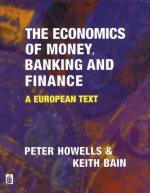






Clifford Clark is a recent retiree who is interested in investing some of his savings in corporate bonds. His financial planner has suggested the following bonds: - Bond A has a 12% annual coupon, matures in 12 years, and has a $1,000 face value. - Bond B has a 9% annual coupon, matures in 12 years, and has a $1,000 face value. - Bond C has a 6% annual coupon, matures in 12 years, and has a $1,000 face value. Each bond has a yield to maturity of 9%. Do not round intermediate calculations. Use a minus sign to enter negative values, if any. If an answer is zero, enter "0". Download spreadsheet Bond Valuation-04ee64.xlsx a. Before calculating the prices of the bonds, indicate whether each bond is trading at a premium, at a discount, or at par. Bond C is selling at because its coupon rate is the going interest rate. b. Calculate the price of each of the three bonds. Round your answers to the nearest cent. Price (Bond A): $ Price (Bond B): \$ Price (Bond C): \$ the bond.) Round your answers to two decimal places. Current yield (Bond A ) : Current yield (Bond B): Current yield (Bond C): d. If the yield to maturity for each bond remains at 9%, what will be the price of each bond 1 year from now? Round your answers to the nearest cent. Price (Bond A):$ Price (Bond B): \$ Price (Bond C): \$ What is the expected capital gains yield for each bond? What is the expected total return for each bond? Round your answers to two decimal places. e. Mr. Clark is considering another bond, Bond D. It has a 6% semiannual coupon and a $1,000 face value (i.e., it pays a $30 coupon every 6 . Bond D is scheduled to mature in 9 years and has a price of $1,100. It is also callable in 5 years at a call price of $1,030. 1. What is the bond's nominal yield to maturity? Round your answer to two decimal places. % 2. What is the bond's nominal yield to call? Round your answer to two decimal places. % 3. If Mr. Clark were to purchase this bond, would he be more likely to receive the yield to maturity or yield to call? Explain your answer. Because the YTM is the YTC, Mr. Clark expect the bond to be called. Consequently, he would earn g. Calculate the price of each bond (A,B, and C) at the end of each year until maturity, assuming interest rates remain constant. Round your answers to the nearest cent. 1. What is the expected current yield for each bond in each year? Round your answers to two decimal places. 2. What is the expected capital gains yield for each bond in each year? Round your answers to two decimal places. 3. What is the total return for each bond in each year? Round your answers to two decimal places. Clifford Clark is a recent retiree who is interested in investing some of his savings in corporate bonds. His financial planner has suggested the following bonds: - Bond A has a 12% annual coupon, matures in 12 years, and has a $1,000 face value. - Bond B has a 9% annual coupon, matures in 12 years, and has a $1,000 face value. - Bond C has a 6% annual coupon, matures in 12 years, and has a $1,000 face value. Each bond has a yield to maturity of 9%. Do not round intermediate calculations. Use a minus sign to enter negative values, if any. If an answer is zero, enter "0". Download spreadsheet Bond Valuation-04ee64.xlsx a. Before calculating the prices of the bonds, indicate whether each bond is trading at a premium, at a discount, or at par. Bond C is selling at because its coupon rate is the going interest rate. b. Calculate the price of each of the three bonds. Round your answers to the nearest cent. Price (Bond A): $ Price (Bond B): \$ Price (Bond C): \$ the bond.) Round your answers to two decimal places. Current yield (Bond A ) : Current yield (Bond B): Current yield (Bond C): d. If the yield to maturity for each bond remains at 9%, what will be the price of each bond 1 year from now? Round your answers to the nearest cent. Price (Bond A):$ Price (Bond B): \$ Price (Bond C): \$ What is the expected capital gains yield for each bond? What is the expected total return for each bond? Round your answers to two decimal places. e. Mr. Clark is considering another bond, Bond D. It has a 6% semiannual coupon and a $1,000 face value (i.e., it pays a $30 coupon every 6 . Bond D is scheduled to mature in 9 years and has a price of $1,100. It is also callable in 5 years at a call price of $1,030. 1. What is the bond's nominal yield to maturity? Round your answer to two decimal places. % 2. What is the bond's nominal yield to call? Round your answer to two decimal places. % 3. If Mr. Clark were to purchase this bond, would he be more likely to receive the yield to maturity or yield to call? Explain your answer. Because the YTM is the YTC, Mr. Clark expect the bond to be called. Consequently, he would earn g. Calculate the price of each bond (A,B, and C) at the end of each year until maturity, assuming interest rates remain constant. Round your answers to the nearest cent. 1. What is the expected current yield for each bond in each year? Round your answers to two decimal places. 2. What is the expected capital gains yield for each bond in each year? Round your answers to two decimal places. 3. What is the total return for each bond in each year? Round your answers to two decimal places













